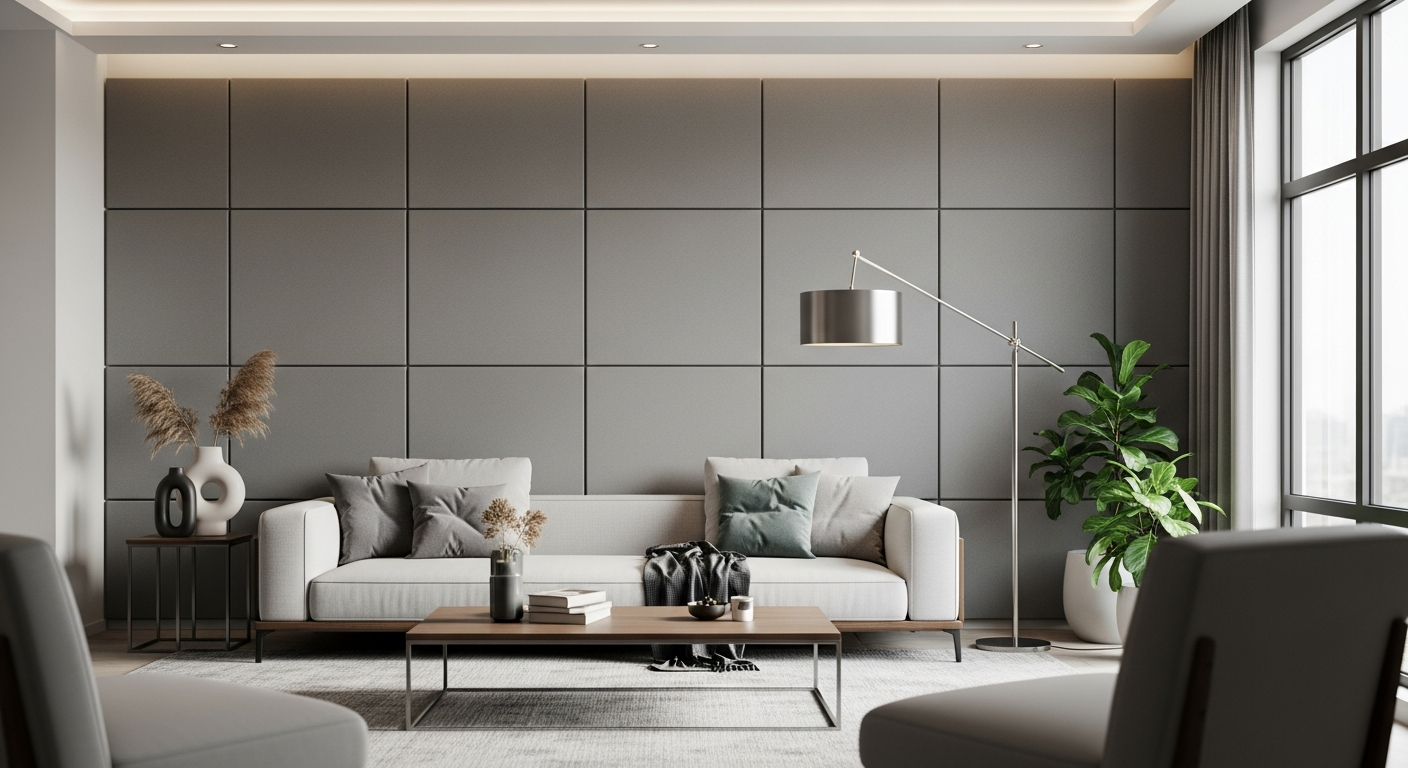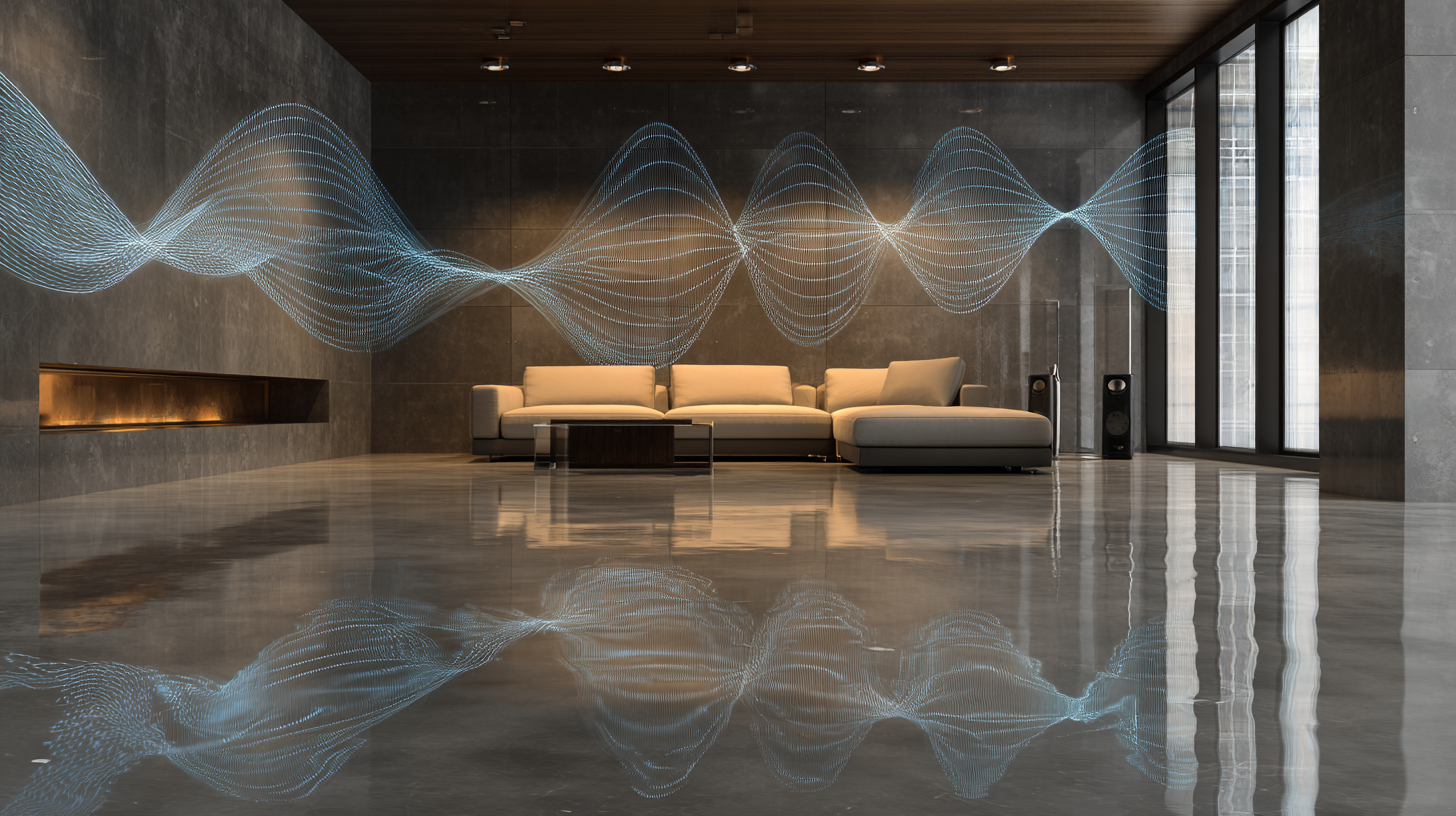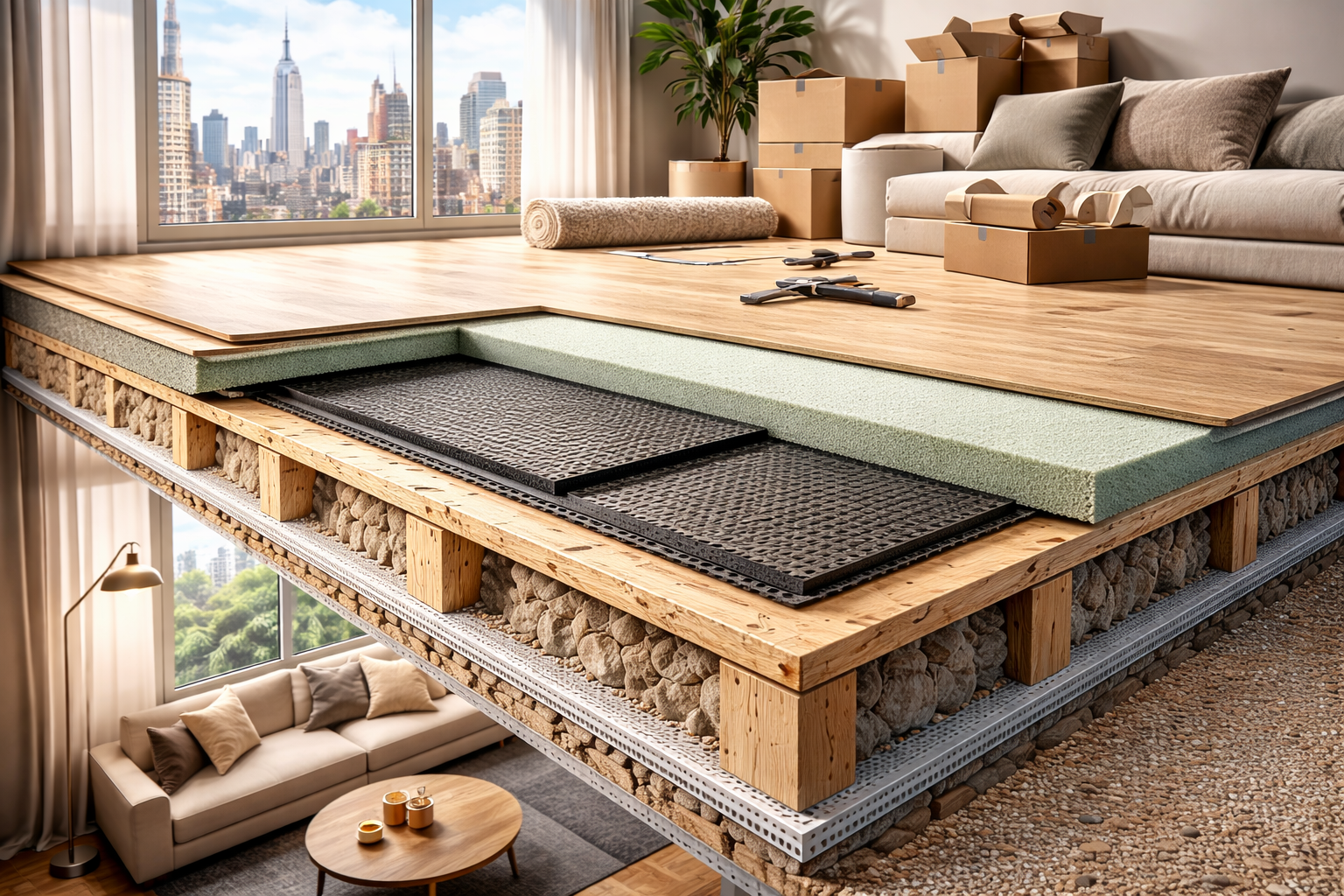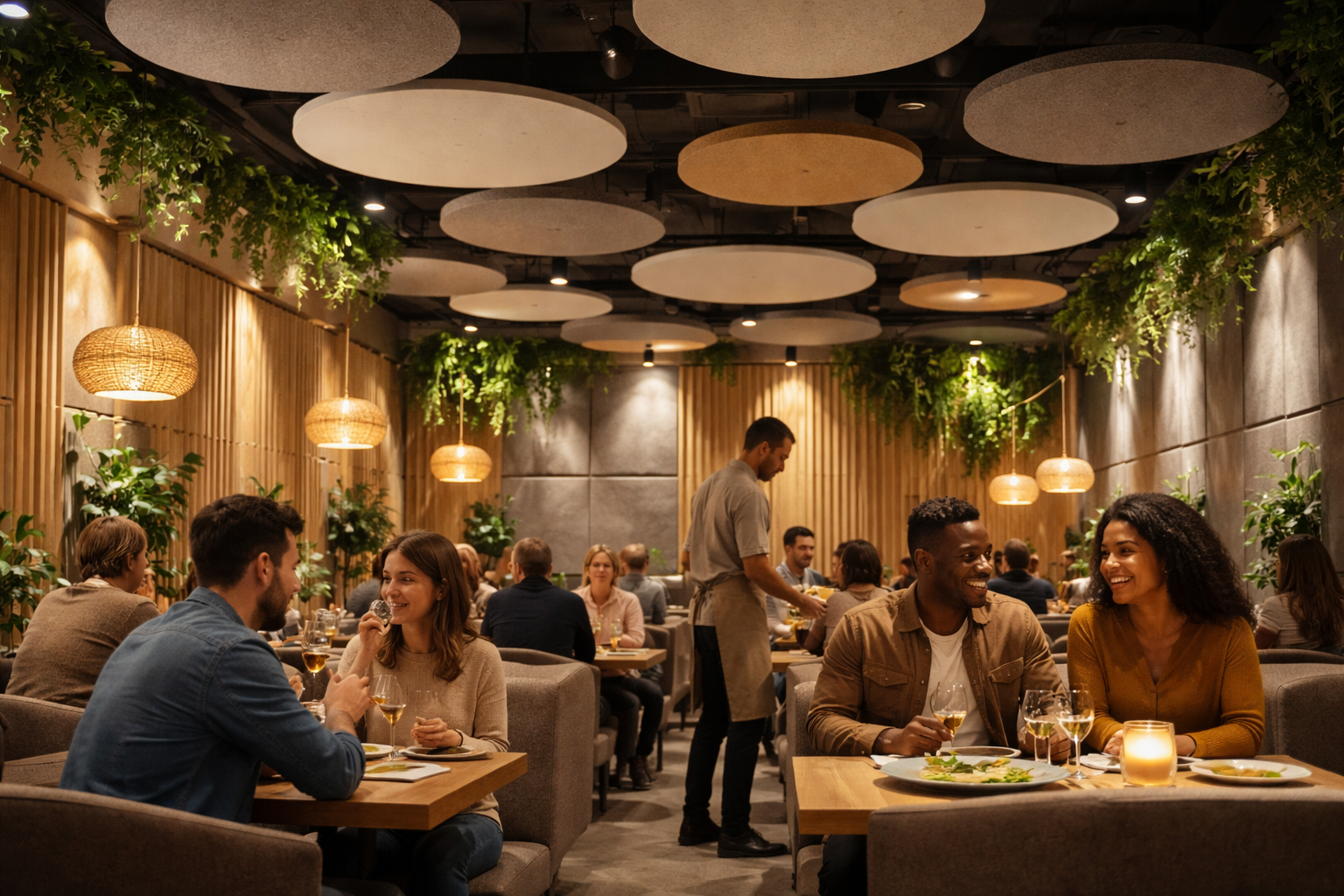What Material Absorbs Sound Best and Why It Matters
If you’ve ever clapped your hands in an empty room and heard that sharp echo bounce right back, you’ve already experienced what happens when sound meets hard surfaces. It’s not just about noise—it’s about how sound behaves. At New York Soundproofing, we’ve seen how the right acoustic materials can completely transform how a room feels and functions. Whether you’re designing a quiet home office, building a recording studio, or trying to calm a busy restaurant, understanding what material absorbs sound best is where great acoustics begin.
How Sound Absorbing Materials Actually Work
Sound travels as waves, and when those waves hit a surface, they either bounce, pass through, or get absorbed. Most hard materials—like glass, concrete, or wood—reflect sound, creating echoes and reverberation. Soft and porous materials, on the other hand, trap those waves inside their fibers and turn that energy into a small amount of heat.
This is what makes a big difference between a noisy, echo-filled room and one that sounds comfortable. The goal isn’t to silence the room completely—it’s to balance reflection and absorption. That balance creates clarity.
At New York Soundproofing, we use specialized sound-absorbing materials designed to manage these reflections effectively. The key is understanding where and how sound behaves in your space. Once we know that, we choose materials that absorb the most energy without compromising design or comfort.
Most Effective Sound Absorbing Materials
.png)
Not all acoustic materials work the same way. Some are better for high frequencies (like clapping or voices), while others manage deeper sounds like bass or HVAC noise. Below are the materials we often recommend to clients who ask, “What material absorbs sound the best?”
Acoustic Foam and Panels
Acoustic foam is one of the most recognizable materials for absorbing sound waves. It’s lightweight, versatile, and excellent for handling mid to high frequencies. You’ll often see it in recording studios, vocal booths, or podcast rooms.
But foam alone doesn’t always solve the entire problem. That’s why our acoustic panels—built with denser cores and fabric finishes—offer a stronger, more refined version of the same concept. They don’t just absorb sound; they also add a clean, professional look to any wall.
When installed correctly, these panels reduce reflections, improve speech clarity, and eliminate that “hollow” feeling in open rooms. Whether it’s a media room or a workspace, acoustic foam and panels deliver real, noticeable results.
Fiberglass and Mineral Wool
When clients ask us what material absorbs the most sound, fiberglass and mineral wool always make the shortlist. These materials have incredible density and porosity, allowing them to trap sound waves across a wide frequency range—including deep, low-end frequencies that foam can’t always control.
Mineral wool (also known as rock wool) is especially effective in larger environments like auditoriums, offices, or studios where sound energy builds up quickly. Fiberglass panels are lightweight yet powerful, and they’re perfect for covering larger wall or ceiling areas.
We use both materials inside acoustic panels, bass traps, and ceiling clouds. The result is a controlled, warm sound that feels natural instead of muffled. For anyone searching for a good soundproofing material, this combination often provides the best long-term solution.
Fabric-Wrapped Absorbers
Fabric-wrapped absorbers combine beauty with function. They’re built using cores made from fiberglass or mineral wool and wrapped in acoustically transparent fabric that lets sound pass through to the absorbing layer beneath.
At New York Soundproofing, we handcraft these panels in-house, giving clients complete control over the look—colors, sizes, and even patterns. They can match your décor while quietly reducing echoes and improving speech intelligibility.
Fabric absorbers are also versatile: they can cover walls, fit into ceiling grids, or even act as standalone art pieces. Their performance, however, is anything but decorative—they remain one of the most effective sound-absorbing materials for walls in residential and commercial interiors.
Acoustic Curtains and Soft Materials
People often overlook how much everyday fabrics help with sound. Thick curtains, rugs, and upholstered furniture all absorb part of the energy from sound waves bouncing off walls. Acoustic curtains take that concept to the next level.
They use multi-layered fabrics with high-density weaves to reduce reflections and block external noise. When installed over windows or glass partitions, they can make a dramatic difference in both privacy and comfort.
While soft materials don’t replace professional panels, they complement them beautifully. In living spaces, we often combine curtains, panels, and rugs to achieve the best acoustic balance—functional yet cozy.
Sound Absorbing Materials for Walls
When people first contact us at New York Soundproofing, they usually want to know how to make their walls “soak up” noise instead of bouncing it around. That’s exactly what sound-absorbing materials for walls are designed to do.
Hard, flat walls are the biggest reason a room feels loud. They reflect every bit of sound energy back into the space. To control this, we use a mix of surface-mounted and built-in solutions depending on the wall structure.
Acoustic panels are the most common starting point. They’re installed directly on the wall to absorb mid and high frequencies. Behind those panels, we often use fiberglass or mineral wool cores—materials that absorb both shallow and deeper sound waves. In some projects, we also add a thin air gap between the panel and the wall to boost performance without adding thickness.
If the goal is a more minimal design, we integrate acoustic fabric systems—stretched wall coverings with hidden absorptive layers underneath. They look sleek and modern, and they keep the acoustic treatment nearly invisible. For larger commercial projects, perforated wall systems or composite panels can be customized for both performance and visual continuity.
No matter the approach, the idea is simple: capture the sound where it starts, right at the wall surface, before it spreads through the room.
Choosing the Right Acoustic Material for Your Needs

Knowing what material absorbs sound is only half the story. The real challenge is finding the right balance for your specific environment. Each space has its own purpose, mood, and acoustic fingerprint. At New York Soundproofing, we build solutions that match those variables perfectly.
Home Offices and Recording Studios
In small rooms, every reflection matters. Home office soundproofing isn’t just about blocking outside noise — it’s about taming the echo that makes your calls and recordings sound harsh. The fix doesn’t have to look like a studio; you just need the right mix of noise-absorbing material in key spots.
Fabric-wrapped panels or acoustic foam behind your desk and near reflective surfaces can dramatically improve clarity. For recording studio soundproofing, we go deeper — combining dense absorbers with bass traps to handle low-frequency buildup and create an even, controlled sound field. The goal is accurate, balanced acoustics, not over-damped silence.
We’ve treated countless recording spaces across New York, and the same rule always applies: if you can hear your own voice bouncing back, the room needs treatment.
Restaurants and Commercial Spaces
Commercial soundproofing addresses a very different challenge — spaces like restaurants, cafés, and hotel lobbies often suffer from too much liveliness. Customers love energy, but not when they have to shout over it. The solution lies in spreading absorption across the ceiling and upper wall areas, where sound naturally gathers.
We often recommend acoustic material that doubles as design—custom-colored panels, ceiling baffles, or wall-mounted art absorbers. They soften the soundscape while enhancing the look of the space.
For businesses, the benefits go beyond comfort. Better acoustics mean longer customer stays, clearer communication, and a calmer atmosphere. It’s a small change that leaves a big impression.
Conference Rooms and Open Offices
If you’ve ever been in a glass-walled meeting room where every word echoes, you know how critical proper sound absorption can be. In offices, uncontrolled reflections can cause distraction, fatigue, and privacy issues.
For these spaces, we focus on sound-absorbing materials for walls and ceilings—fabric panels, acoustic clouds, and modular dividers. They not only cut echo but also reduce background noise levels, making speech easier to understand.
In open offices, even a few strategically placed panels can reduce sound propagation between work zones. The result: fewer interruptions, better focus, and a much more pleasant workspace.
Custom Sound Absorption Solutions
There’s no single “best” sound absorber for every situation. Foam, fiberglass, mineral wool, and curtains each serve a different purpose. The real expertise lies in combining them into a complete system that works with your architecture, not against it.
At New York Soundproofing, we don’t sell pre-packaged kits. We create custom acoustic solutions built for the realities of New York living and working—small apartments, tall ceilings, noisy streets, shared walls. We analyze the sound behavior of your space, design absorbers that match your goals, and build them right here in our local facility.
We handle everything: design, fabrication, and installation. The result isn’t just better acoustics—it’s a better experience. Conversations sound natural, music feels alive, and every room becomes more comfortable to be in.
When people ask us what material absorbs sound the best, we always give the same answer: it depends on your space, but the best solution is always the one designed specifically for you.
Because soundproofing isn’t just about materials—it’s about creating balance, calm, and clarity. And that’s exactly what we do every single day at New York Soundproofing.



